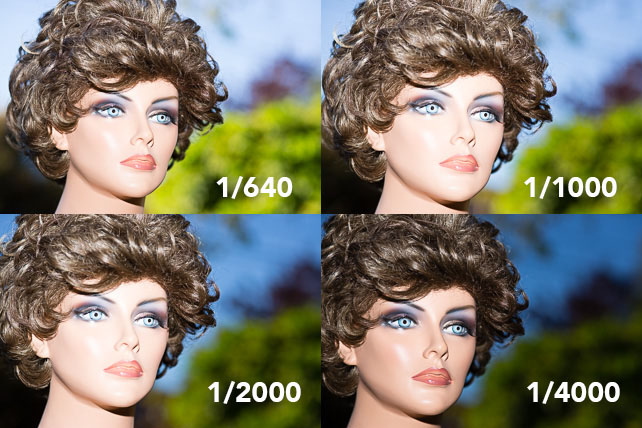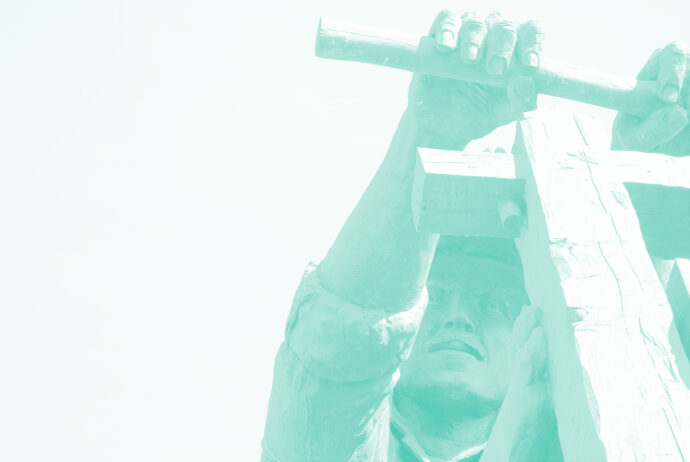As we’ve previously mentioned, shutter speed doesn’t make a world of difference when it comes to motion blur in your photography (the kids still won’t sit still!). That comes down to flash duration and how it will sync with the speed of your camera.
But there is more to the story …
Let’s You And Me Take This Outside, Pal
Shutter speed with flash does play an important role in outdoor flash photography with a lot of ambient light. There your ISO and aperture control the exposure on the flash-lit subject and the shutter speed affects the brightness of the background.
By slowing down your shutter speed in this situation, you will make the background brighter. By speeding it up, you darken the background.
Outdoor flash photography is also where high-speed sync (HSS) comes into play. Without HSS, you must limit your shutter speeds to your camera’s sync speed or slower.
Depending on the camera, this could typically be anywhere from 1/60 to 1/250. You will need to consult the owner’s manual for your particular camera to find the sync speed (Do you remember where you put the manual?).
The usual situation is that you want to take a flash photo outdoors on a sunny day and want to use a large aperture (maybe 2.8 or faster) to blur out the background. The base/ambient exposure (the exposure without flash) might be something like 1/2000 second at f/2.0.
If you add a flash that doesn’t have high-speed sync (HSS), your shutter speed is limited to the sync speed of your camera, which in this case 1/160 second. This means that you cannot shoot at f/2.0, you need to stop down to f/8 because of the slower shutter speed. Now you have too much depth of field (the background objects are too in focus and distracting). By engaging HSS on your speed light you can now sync the camera at 1/2000, but your flash will lose power due to the way HSS works and the light may need to be in close to your subject.

- The image on the left above is at 1/160 second at f/11 with no flash
- The middle image is 1/160 at f/11 with flash
In both images, the background is too distracting. To fix that, we want to shoot at f/2.0
- The image on the right is 1/5000 at f/2.0 with no flash to give shallow depth of field.
But the eyes are in shadow. Let’s use a flash to fill in the shadows.

Here we start with the last image from the last series. 1/5000 at f/2.0 with no flash
In the middle image, I turned on the flash without high-speed sync. It dropped the shutter speed to 1/200 second (maximum sync speed on the Canon 5D mkIII). Because I set the aperture to f/2.0 for the background, the image becomes way overexposed.
On the right, I turned on high-speed sync which let the camera and speedlight sync at 1/5000 second at f/2.0. Now there is some light in the eyes, shadows are opened up a bit, and the background is nicely blurred to help make the subject stand out.
Everything But The High Speed Sync
Earlier I mentioned controlling the ambient exposure via shutter speed. Let’s take a look at that.
Here I have combined high-speed sync, manual exposure, and manual flash settings.

The base setting for the sky exposure is 1/2000 at f/4. My on-camera flash is set to full power so that it has enough reach for high-speed sync. The images above are shot at 1/640, 1/1000, 1/2000, and 1/4000 with flash.
Notice that the background is lighter in the first two images, normal in the third, and darker in the last image. The last image, at 1/4000 shows a darker subject because the flash didn’t have enough power to handle high-speed sync even at full power at this distance and at such a high shutter speed.
I hope I have helped further clarify the use of shutter speed and what it’s capabilities are.
If you’re still with me, congratulations! Your Ph.D. on shutter speeds is in the mail.



